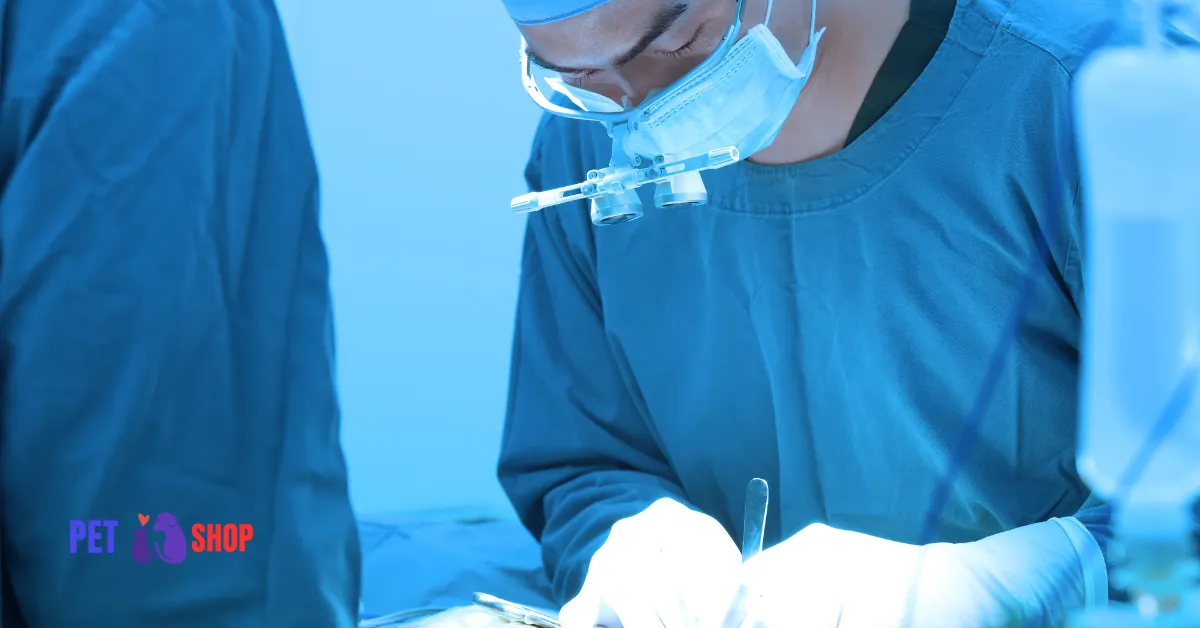The necropsy of animals is an essential procedure in veterinary medicine that contributes significantly to understanding the cause of death, the development of diseases, and the eventual implementation of preventive measures. In this article, we will explore in detail quais são os 4 tipos de necropsia de animais, presenting a comprehensive perspective that aims to answer real doubts of users seeking reliable and clear information. The discussion will cover not only the basic methodologies employed in each type but also the advantages and specific applications when deeper knowledge is required regarding animal health.
Necropsia Completa
The necropsia completa, or full necropsy, is the most thorough approach performed on an animal after death. During this process, every organ and tissue is systematically examined by a veterinary pathologist. The procedure begins with an external evaluation, followed by the systematic removal and inspection of internal organs. This method is essential for identifying complex pathological processes that may involve multiple systems simultaneously. In many cases, the necropsia completa is indicated when the cause of death is uncertain or when there is suspicion of a disease with systemic manifestations. A comprehensive evaluation allows for the collection of numerous tissue samples that can be processed further and analyzed histopathologically.
In addition, este tipo de necropsia is indispensable in studies epidemiológicos, particularly in outbreak situations where understanding the spread of a disease is crucial. The method also contributes to advancing scientific studies on animal diseases, thus helping to build protocols for future preventive actions. Transitional techniques, such as the frozen sampling for subsequent special tests, strengthen the final diagnostic capability. For those involved in animal health, agricultural production, and conservation programs, the necropsia completa represents a reliable tool to elucidate clinical enigmas and to serve as the basis for more detailed research.
Necropsia Direcionada
A necropsia direcionada is characterized by its focused approach. Instead of examining the entire animal, this method concentrates on the suspected organs or systems that may have directly contributed to the animal’s demise. Often, clinical records, anamnesis, and preliminary investigations guide the pathologist toward a more specific evaluation. With this precise targeting, resources are optimally used, resulting in a faster diagnostic conclusion. In cases where the suspected lesion is limited to a particular region of the body, the necropsia direcionada can be extremely efficient in determining the cause of death, reducing technical expenses when compared to a full-scale necropsy.
Veterinarians and laboratories may opt for this targeted approach in situations where the clinical history includes sinais consistentes de disfunção em determinados sistemas, such as the cardiovascular or respiratory systems. Important benefits of the necropsia direcionada include its agility and the possibility of a focused histological evaluation, in addition to imaging techniques that can further substantiate the findings. By prioritizing the area of interest, this procedure not only accelerates diagnosis but also provides data that is more specific and directly applicable to the treatment and prevention of similar cases in the future.
Necropsia Histopatológica
The necropsia histopatológica emphasizes the microscopic examination of tissues to identify cellular alterations that may not be easily detectable during a conventional necropsy. This method integrates the principles of gross necropsy with detailed histological assessment, allowing for a more in-depth understanding of disease mechanisms. After the initial macroscopic evaluation, specific fragments of tissues are collected and processed through fixation, embedding, and coloring techniques in order to facilitate microscopic analysis.
This procedure is particularly important when the pathological changes occur at a level below what is visually observable. It assists in the identification of early stages of inflammation, neoplastic transformations, or degenerative changes that might contribute to the animal’s condition. The integration of histopatologia in the necropsia process becomes indispensable when there is a need for a confirmatory diagnosis or for ruling out differential diagnoses that could interfere with the subsequent development of treatment protocols for other animals in similar settings. The precise detection of subtle alterations is a significant advantage, especially in groups of animals used in research or in cases of suspect zoonoses where careful histopathological evaluation supports a robust epidemiological study.
Necropsia Toxicológica
A necropsia toxicológica focuses on detecting the presence and effects of various toxic substances in the animal’s body. This specialized procedure is essential in cases of suspected poisoning or exposure to environmental contaminants. In the toxicological necropsy, in addition to the standard macroscopic and histological evaluations, specific samples such as blood, urine, and tissue from target organs (like the liver and kidneys) are collected. These samples undergo rigorous chemical analyses in laboratories equipped for quantifying toxins, pesticides, drugs, or heavy metals.
The results from necropsia toxicológica are fundamental when the clinical history suggests the involvement of toxic agents. The integration of analytical chemistry methods ensures a precise identification of the poisoning agent, which is critical not only for confirming the diagnosis but also for taking preventive measures in the environment where the outbreak occurred. Veterinary authorities often rely on this type of necropsy to trace sources of contamination, and the findings may serve as a basis for regulatory actions. Therefore, the necropsia toxicológica is a critical aspect of investigative veterinary pathology, expanding the understanding of toxicological dynamics in animal populations and supporting initiatives aimed at safeguarding both animal and public health.
Aplicações Práticas dos Tipos de Necropsia
The selection of the appropriate necropsy type often depends on various factors such as the animal species, the circumstances related to death, and the clinical history provided by the owner or veterinarian. Transitional decision-making is a common step during the investigation process. For instance, when an animal presents with sintomas inespecíficos, a necropsia completa may be recommended to identify any hidden abnormalities. Conversely, in a scenario where a localized infection or trauma is suspected, the necropsia direcionada quickly focuses on the affected region. Similarly, if laboratory analysis detects alterations potentially linked to toxic compounds, the necropsia toxicológica plays a crucial role in confirming or excluding poisoning cases.
It is important to recognize that in some situations a combination of these approaches can be applied to provide a robust diagnostic picture. For example, the necropsia completa can be complemented by histopathological processing, resulting in a synergistic methodology to obtain both macroscopic insights and cellular-level details. Furthermore, the integration of advanced image diagnostics (such as radiography or ultrasonography) has increasingly been incorporated into necropsy protocols, thereby enhancing the scope and accuracy of the post-mortem examinations. The interdisciplinary collaboration between pathologists, toxicologists, and veterinarians ensures that each necropsy is tailored to yield comprehensive and reliable results.
Importância da Otimização e Padronização dos Procedimentos
The standardization of necropsy procedures is vital for maintaining high diagnostic quality in veterinary medicine. When performed systematically, each type of necropsy contributes to a broader comprehension of specific pathological processes. To this end, the training and qualification of veterinary pathologists are essential. These professionals follow stringent protocols that minimize the risk of diagnostic errors. In addition, the consistency in sample collection and processing facilitates later comparações across different cases and time periods, which is an indispensable asset for epidemiological studies.
Another aspect to consider is the implementation of quality controls in laboratory settings, ensuring that samples analyzed under histopathological or toxicological frameworks are not compromised. The use of protocolos padronizados também auxilia na comunicação entre profissionais, permitindo a troca de informações e a consolidação de dados relevantes para o avanço da ciência veterinária. Moreover, the ongoing development and adoption of new technologies, such as molecular techniques and digital imaging, have further optimized the necropsy process, ultimately leading to earlier diagnoses and more precise therapeutic interventions, which is highly beneficial for managing animal health on a large scale.
Benefícios para a Medicina Veterinária e a Saúde Pública
The knowledge gained from necropsies extends beyond the individual case, underpinning developments in both veterinary medicine and public health. Systematic necropsy studies provide valuable data on disease prevalence, emerging pathogens, and the potential for zoonotic transmissions, which is particularly significant in a world that faces constant challenges related to environment and human-animal interactions. Veterinary institutions use the results of necropsies as a basis for research, which subsequently influences the development of new therapeutic strategies, vaccines, and preventive measures.
This type of assessment helps to identify outbreaks earlier, allowing for prompt interventions that can mitigate the spread of diseases. Additionally, the gathered information is also used to inform policy decisions regarding animal management and food safety. Institutions involved in animal production and agriculture benefit from these procedures by refining biosecurity measures that ensure the welfare and productivity of animal populations. Ultimately, the integration of necropsy findings with broader health surveillance programs creates a more resilient health system that protects both animal and human communities.
Considerações Finais
In conclusion, understanding quais são os 4 tipos de necropsia de animais represents a crucial competence for veterinary professionals dedicated to uncovering the causes of animal death and improving overall health protocols. Each necropsy type – completa, direcionada, histopatológica and toxicológica – has its specific applications, benefits, and contributions to the field. The careful selection of the necropsy method, combined with standardized procedures and constant integration of innovative techniques, allows veterinarians to achieve diagnoses that are not only more precise but also integral to advancing both animal health and public safety. The continuous evolution in this field reaffirms the importance of investing in quality professional training and in the development of collaborative research initiatives, ultimately supporting a more robust response to both routine and emergent health challenges.
Links para:



